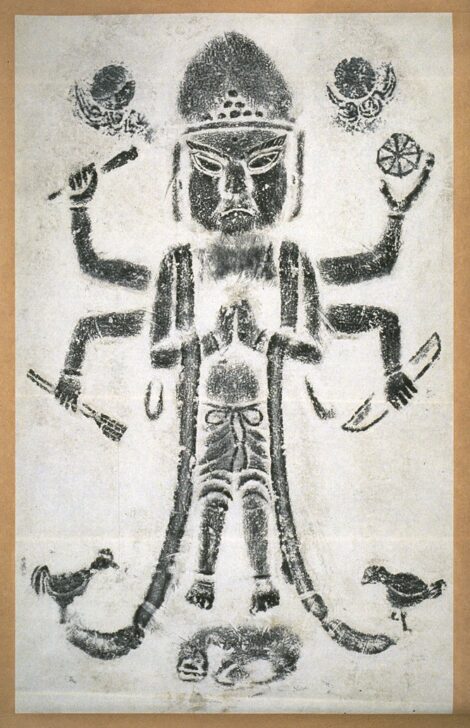Bodhisattva Amoghapasa (Japanese, Fûkûkenjaku Kannon)(Avalokitesvara of the never-empty noose)
Japanese

Description
Rubbing of an unidentified Myōō figure
Japan
Shōwa period (1926–89)
ca. 1950
Hanging scroll, ink on paper
Gift of Mrs. Caroline J. Plumer, 1991/1.76
Ink rubbings, or taku-hon, originated in China as a means
of preserving inscriptions carved on stone monuments.
They are produced by laying a wet sheet of paper over the
surface of a stone and applying ink to the paper after it has
mostly dried, which colors the raised surfaces black. Unlike
drawings or photographs, these rubbings preserve the scale
of the original work.
These two ink rubbings reproduce folk carvings of Fudō
Myōō, an Esoteric Buddhist divinity whose ferocious
appearance is believed to frighten people into accepting
Buddhist teachings, and an unidentified Myōō, or
“Bright King” figure. Though Buddhist sculptures were
often produced by professional sculptors, details in the
iconography of the Myōō figure suggest the original works
were carved by folk devotees.
Usage Rights:
If you are interested in using an image for a publication, please visit https://umma.umich.edu/request-image/ for more information and to fill out the online Image Rights and Reproductions Request Form.